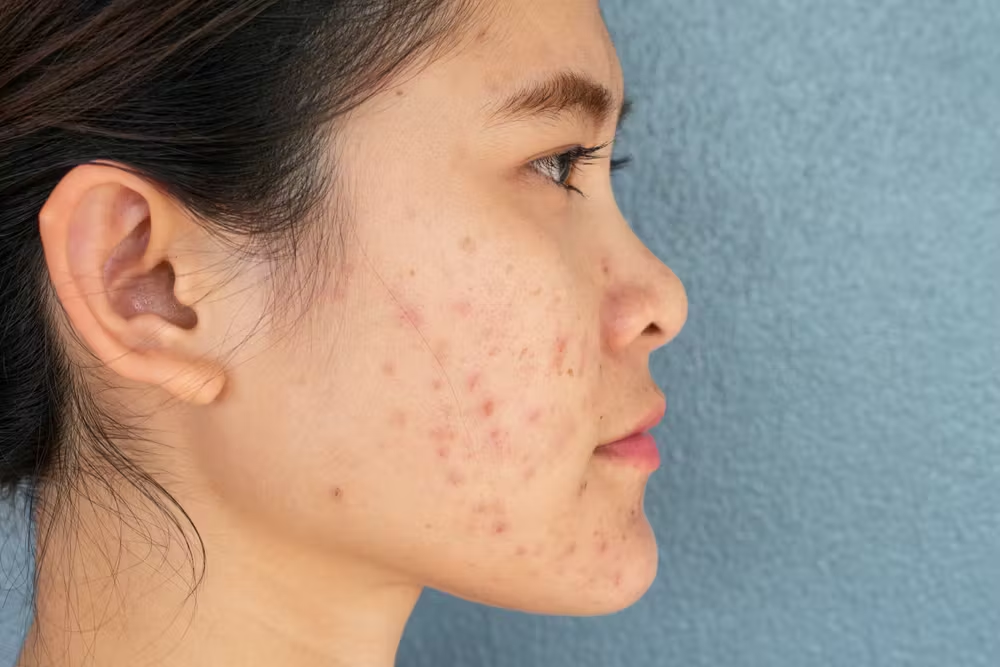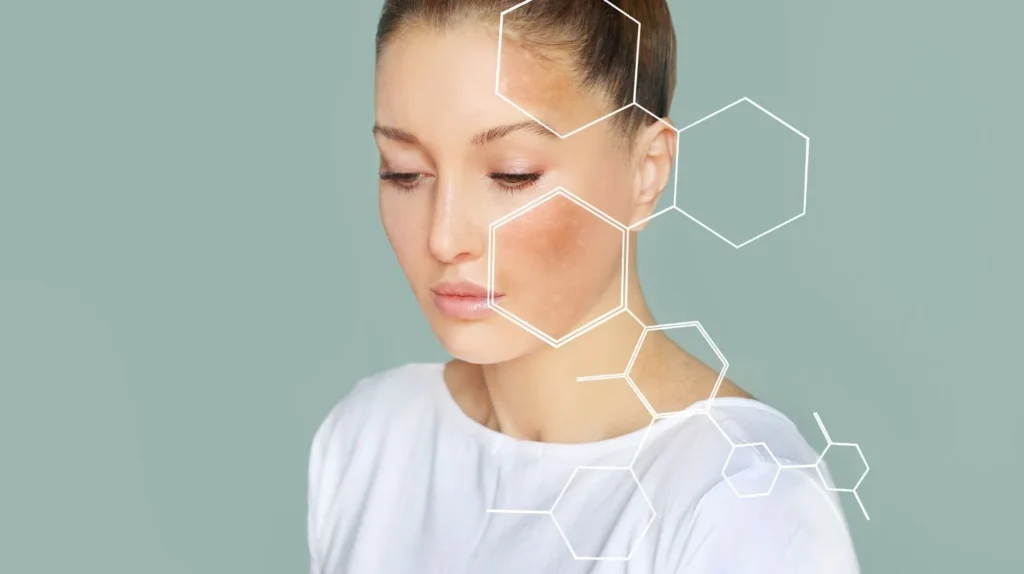Introduction: The Complex Relationship Between Hormones and Skin
Your skin is more than just a surface — it’s a mirror of what’s happening inside your body. One of the biggest internal influencers? Hormones. These chemical messengers regulate everything from oil production to cell regeneration. When they’re in balance, your skin often thrives. When they’re not, you may experience breakouts, dryness, dullness, or sensitivity.
This blog dives deep into how hormones impact your skin throughout various life stages and what you can do to keep your complexion in check, no matter what your body is going through.
1. What Are Hormones and Why Do They Matter to Your Skin?

Hormones are chemical messengers produced by glands in your endocrine system. They control major functions like metabolism, stress response, reproductive health—and yes, skin condition.
Key skin-related hormones:
- Estrogen: Helps with collagen production and skin elasticity.
- Progesterone: Affects oil production and skin hydration.
- Testosterone: Can increase sebum (oil) production, leading to breakouts.
- Cortisol: The stress hormone that can break down collagen and increase inflammation.
- Thyroid hormones: Influence skin thickness and hydration.
Any imbalance among these can manifest visibly, which is why understanding hormones is critical to managing your skin health.
2. Teenage Skin: Puberty and the Surge of Oil

Adolescence is typically the first time people notice dramatic changes in their skin—and hormones are the reason. During puberty, the body begins to produce more androgens like testosterone, which stimulate sebaceous (oil) glands.
What you may experience:
- Oily skin
- Blackheads and whiteheads
- Hormonal acne around the T-zone
Tips for managing teenage hormonal skin:
- Use a gentle foaming cleanser twice a day
- Incorporate salicylic acid or benzoyl peroxide for breakouts
- Avoid over-exfoliation, which can trigger more oil production
3. The Menstrual Cycle and Monthly Skin Changes

Many women notice predictable skin fluctuations tied to their menstrual cycles. Estrogen and progesterone levels rise and fall across the month, affecting hydration, oil production, and even skin sensitivity.
Week-by-week skin shifts:
- Week 1 (Menstruation): Dull, dry skin due to low estrogen
- Week 2 (Follicular phase): Skin looks vibrant as estrogen rises
- Week 3 (Ovulation): Increased oil production, possible breakouts
- Week 4 (Luteal phase): Progesterone peaks, triggering inflammation or acne
What you can do:
- Adjust your skincare with the cycle (hydrating in week 1, clarifying in week 3)
- Spot-treat breakouts before they surface
- Stay consistent with sunscreen and moisturizer
4. Pregnancy and Skin: The Glow and the Troubles

Pregnancy causes massive shifts in hormone levels, particularly estrogen and progesterone. While some women experience the fabled “pregnancy glow,” others deal with less flattering changes.
Common pregnancy skin changes:
- Melasma (dark patches on the face)
- Stretch marks
- Increased sensitivity
- Hormonal acne
Pregnancy-safe skincare advice:
- Avoid retinoids, salicylic acid over 2%, and hydroquinone
- Use mineral sunscreens to prevent melasma
- Focus on hydration and gentle cleansing
5. Hormones and Adult Acne: Why It Doesn’t End After Teen Years
Contrary to popular belief, acne isn’t just a teenage problem. Many adults, especially women, experience breakouts well into their 30s and 40s. Fluctuations in hormones, stress, and even birth control use can be culprits.
Signs of hormonal acne:
- Breakouts around the chin, jawline, or neck
- Painful cystic pimples that don’t come to a head
- Flare-ups before menstruation
How to deal with adult hormonal acne:
- Consider topical treatments like azelaic acid or niacinamide
- Ask a dermatologist about spironolactone or hormonal birth control
- Use non-comedogenic products and avoid pore-clogging ingredients
6. Perimenopause and Menopause: The Skin Starts to Shift
Starting in your 40s and beyond, estrogen levels decline, affecting skin’s hydration, collagen, and elasticity. This is when signs of aging become more noticeable and sensitivity increases.
Hormone-driven skin changes in menopause:
- Thinner, more fragile skin
- Increased dryness
- Wrinkling and sagging
- Flare-ups of rosacea or eczema
Smart skincare tips for this stage:
- Switch to richer moisturizers with peptides and ceramides
- Add retinoids and antioxidants like Vitamin C
- Don’t skip SPF, even if you’re indoors more often
7. How Stress Hormones Impact Skin
Cortisol, the primary stress hormone, can wreak havoc on your skin. When stress becomes chronic, cortisol levels stay high, leading to inflammation, increased oil production, and slower healing.
Cortisol-related skin issues:
- Acne breakouts
- Puffy or dull skin
- Flare-ups of eczema or psoriasis
Stress-busting skincare strategies:
- Incorporate calming ingredients like chamomile or green tea
- Create a nighttime routine to unwind (think warm water, gentle cleanser, moisturizer)
- Prioritize sleep and consider meditation or yoga to lower cortisol levels
8. Eating and Living for Hormonal Balance
What you put in your body can help regulate hormones and improve skin from within.
Lifestyle tips for hormone-friendly skin:
- Eat a balanced diet with omega-3s, whole grains, and leafy greens
- Limit sugar and dairy, which may trigger acne in some people
- Exercise regularly to reduce cortisol and improve circulation
- Get 7–9 hours of quality sleep each night
- Stay hydrated to support detox and hydration
9. When to Seek Professional Help
If your skin problems persist or worsen despite good skincare habits, a dermatologist or endocrinologist may help you pinpoint hormonal imbalances and offer targeted treatments.
Professional interventions may include:
- Hormone testing (blood or saliva)
- Prescription retinoids or topical antibiotics
- Birth control or hormone replacement therapy (HRT)
- Oral medications like spironolactone for acne
Never ignore persistent or painful skin symptoms—they may be your body’s way of signaling something deeper.
Conclusion: Listening to Your Skin and Your Hormones
Your skin is one of your body’s best communicators. When hormones fluctuate—due to puberty, periods, pregnancy, or menopause—your skin often tells the story. The key is to adapt your skincare routine to support your body’s internal changes and work in harmony with it, not against it.
Whether you’re dealing with hormonal acne, dryness, or pigmentation, understanding how hormones affect your skin empowers you to respond with the right treatments, lifestyle choices, and mindset. The result? Healthier, more resilient skin through every chapter of life.
